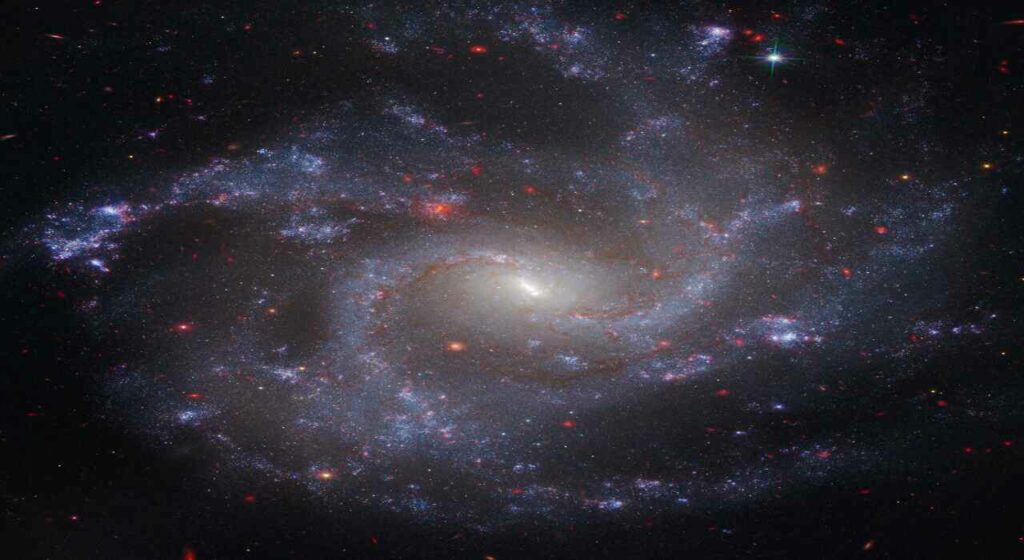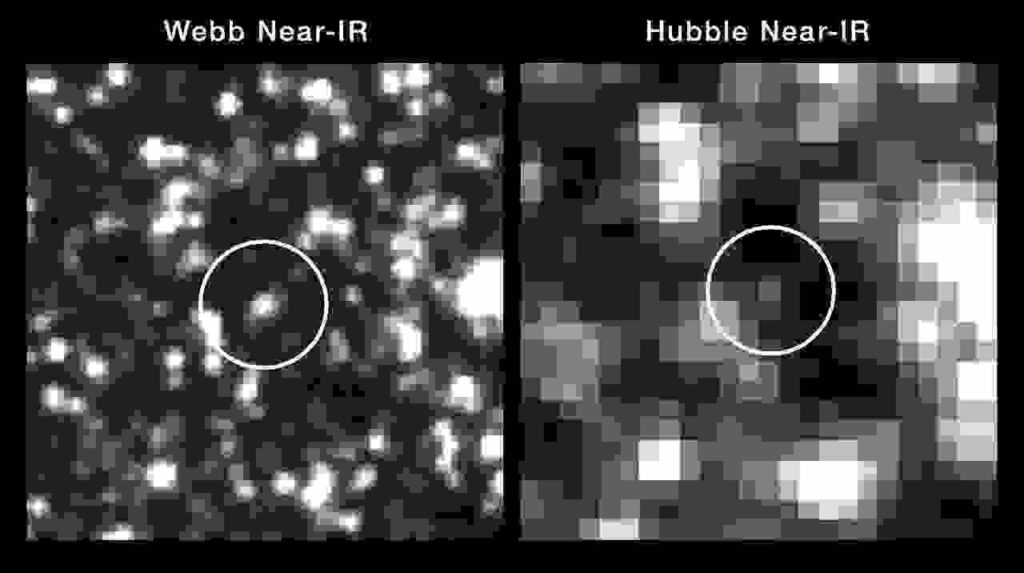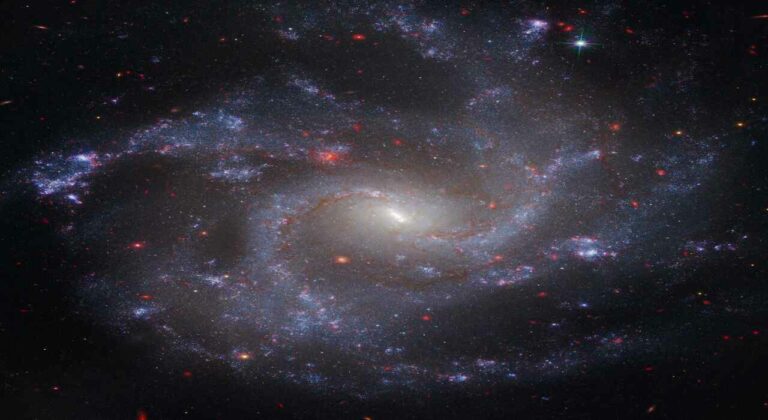Recent findings from the James Webb telescope indicate that our current knowledge of the cosmos may be flawed.
The Hubble constant quantifies an expansion rate of the universe and is a key parameter determining the population of the universe and its future evolution. However, an inconsistency relating to this constant still remains known as the Hubble Tension, where it is possible to measure the value of the constant through other distance measurement techniques other than the afterglow of the Big Bang and get a different result. of the distance of the object in question, and the Hubble Space Telescope was never doubted to be inaccurate, thanks to the JWST which is a joint project of NASA, ESA, and CSA.

The primary purpose of designing the NASA/ESA Hubble Space Telescope was therefore to accurately measure the rate of expansion of the cosmos with the help of its outstanding observing capacity. Before the Hubble missions in 1990, ground-based observatories offered imprecise data for the measurement. By deducing the values of the expansion rate, then the age of the universe could have been measured to be between 10 and 20 billion years.
The Age of the Universe With the help of Hubble, this measurement has been refined over the last 34 years and has achieved an error margin of less . 8 billion years. These achievements have been accomplished while developing the “cosmic distance ladder” further and correctly determining other factors such as Cepheid variable stars.
However, different values of Hubble constant is compared to other measurements representing higher rate of expansion than at the Big Bang event. These anomalies were realized from the ESA Planck satellite mission focused on CMB radiation and played a handy role to know the structural development of the universe after the Big Bang.
For a distance that is being measured in deep space using the Hubble telescope, there is a possibility that the distance in question is not actually accurate enough because of some errors that are in association with the use of the Hubble telescope.
Because of this problem, JWST was created thus giving astronomers a chance to support Hubble’s discovery. Webb’s infrared descriptions of Cepheids were aligned with Hubble’s optical data, therefore ensuring that Hubble’s measurements were accurate and removing any doubts.
Unfortunately, this confirmation has raised new question amongst cosmologist, the Hubble Tension: Expansion rate of closer universe is different from that of early universe. It is possible that certain patterns remain unknown to researchers because they are ingrained into the fabric of the universe.
Is the variation in the values attributable to new physics or inaccuracies in the measurements?New data obtained from the Hubble telescope and the future Webb telescope indicate that it is not measurement errors that affect the rate of expansion of the Universe. This exciting possibility has led some scientists to conclude that we may have got it wrong in the way we comprehend the universe. Adam Riess, who is a physicist at Johns Hopkins University and Nobel prize winner for co-discovery of the accelerating expansion of the universe said that based on the fact that measurement errors have been eliminated, a new understanding of the universe could be explained. In 2023, seeing through the webb telescope for the first time proved that Hubble measurements were precise.
However, in an effort to explain the Hubble Tension, some scientists have proposed what they refer to as ‘hidden systematics’, which is basically some measurement error that may not be visible at the moment but could become patent as investigations go deeper into space. There one possible reason that can interfere with the brightness measurements of more distant stars is stellar crowding.
The SH0ES (Supernova H0 for the Equation of State of Dark Energy) team, led by Riess, obtained additional observations with Webb of objects that are critical cosmic milepost markers, known as Cepheid variable stars, which can now be correlated with the Hubble data.
“We’ve now spanned the whole range of what Hubble observed, and we can rule out a measurement error as the cause of the Hubble Tension with very high confidence,” Riess said.
The team’s first few Webb observations in 2023 were successful in showing Hubble was on the right track in firmly establishing the fidelity of the first rungs of the so-called cosmic distance ladder.
Astronomers use various methods to measure relative distances in the universe, depending on the object being observed. Collectively these techniques are known as the cosmic distance ladder – each rung or measurement technique relies upon the previous step for calibration.

But some astronomers suggested that moving outward along the ‘second rung,’ the cosmic distance ladder might get shaky if the Cepheid measurements become less accurate with distance. Such inaccuracies could occur because the light of a Cepheid could blend with that of an adjacent star – an effect that could become more pronounced with distance as stars crowd together in the sky and become harder to distinguish from one another.
The problem is that previous Hubble images of other more distant Cepheid variables are densely packed and overlapping with other stars and it becomes difficult to separate them from one another as the distance between us and their host galaxies increases and for this phenomenon the adjustment is very critical. Interposing dust also complicates the possibility of making measurements in visible light still further. Webb, which has significantly better infrared vision, partly disconnects the Cepheids from other stars by getting through the dust and outshining Hubble.
Webb and Hubble together form a diverse strategy. As Riess noted, “Our Hubble measurements are increasingly reliable as we move down the cosmic distance ladder.
These recent Webb observations include five host galaxies of eight Type Ia supernovae, containing a total of 1,000 Cepheids, and reach the most distant galaxy where Cepheids have been reliably determined – the galaxy NGC 5468 located 130 million light-years from Earth.
Co-author Gagandeep Anand from the Space Telescope Science Institute in Baltimore, which oversees the operations of Webb and Hubble for NASA said, “This covers the entire range where we conducted measurements with Hubble. Thus, we have got as far as the second rung of the cosmic distance ladder. ”
The further confirmation of the Hubble Tension by both Hubble and Webb means that other observatories could potentially help solve the puzzle too, such as the future NASA Nancy Grace Roman Space Telescope and the recently launched ESA Euclid mission.
As of now, it seems that the distance ladder seen by Hubble and Webb has anchored one end, although it is far away, while on the other end, there now stands the afterglow of the Big Bang seen by Planck. We have no empirical evidence of how the expansion of the universe over a period of approximately 13 billion years between these two milestones happened.
Riess warned, “In that case we have to find out if there are gaps in the picture how the universe began and developed to the present day.
The research has appeared in the publication titled The Astrophysical Journal Letters.
Reference: Adam G. Riess et al, JWST Observations Reject Unrecognized Crowding of Cepheid Photometry as an Explanation for the Hubble Tension at 8σ Confidence, The Astrophysical Journal Letters (2024). DOI: 10.3847/2041-8213/ad1ddd
Do not forget to share your opinion with us to provide you with the best posts




0 Comments